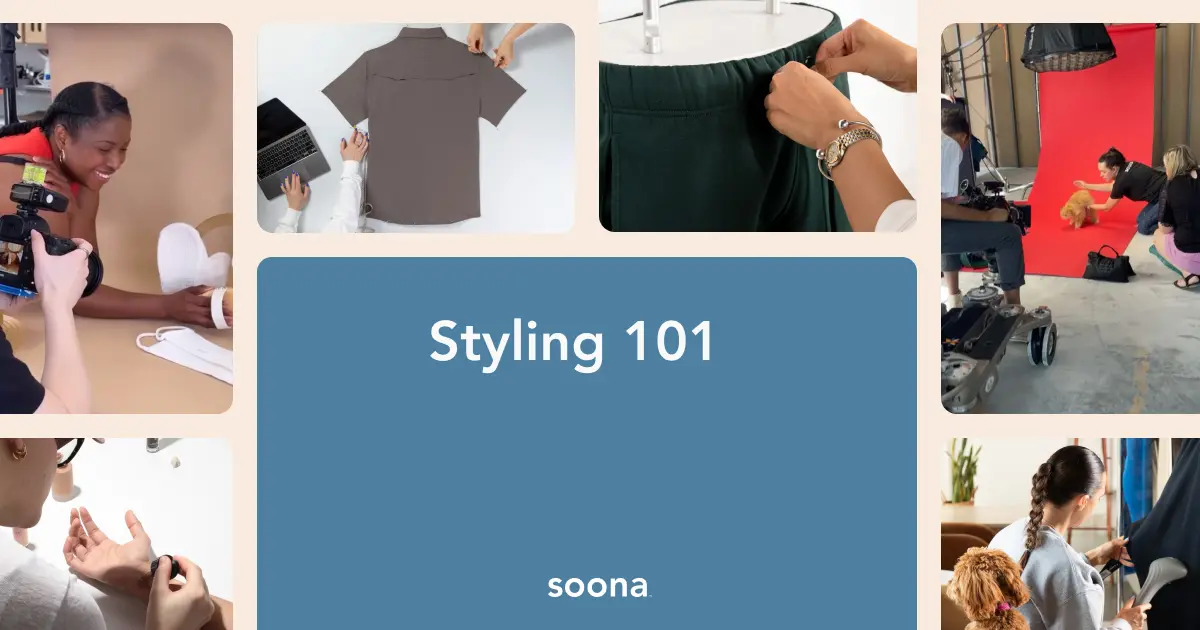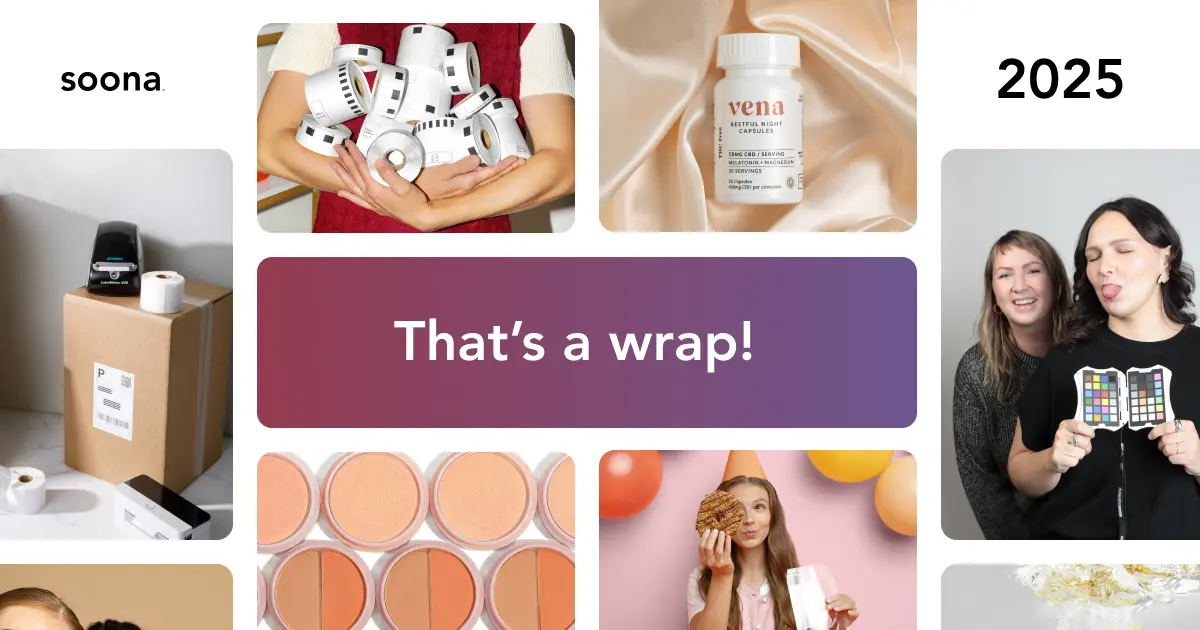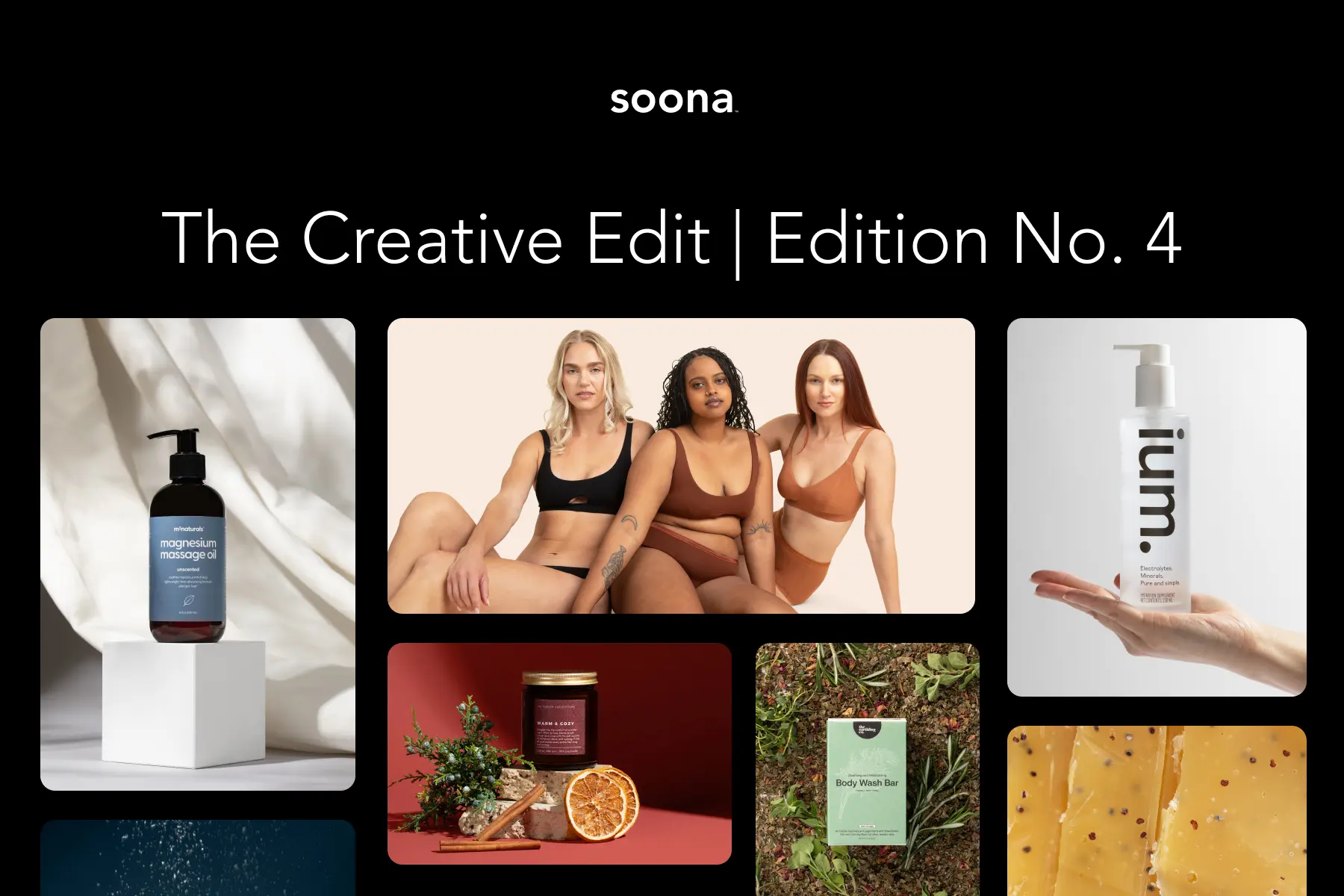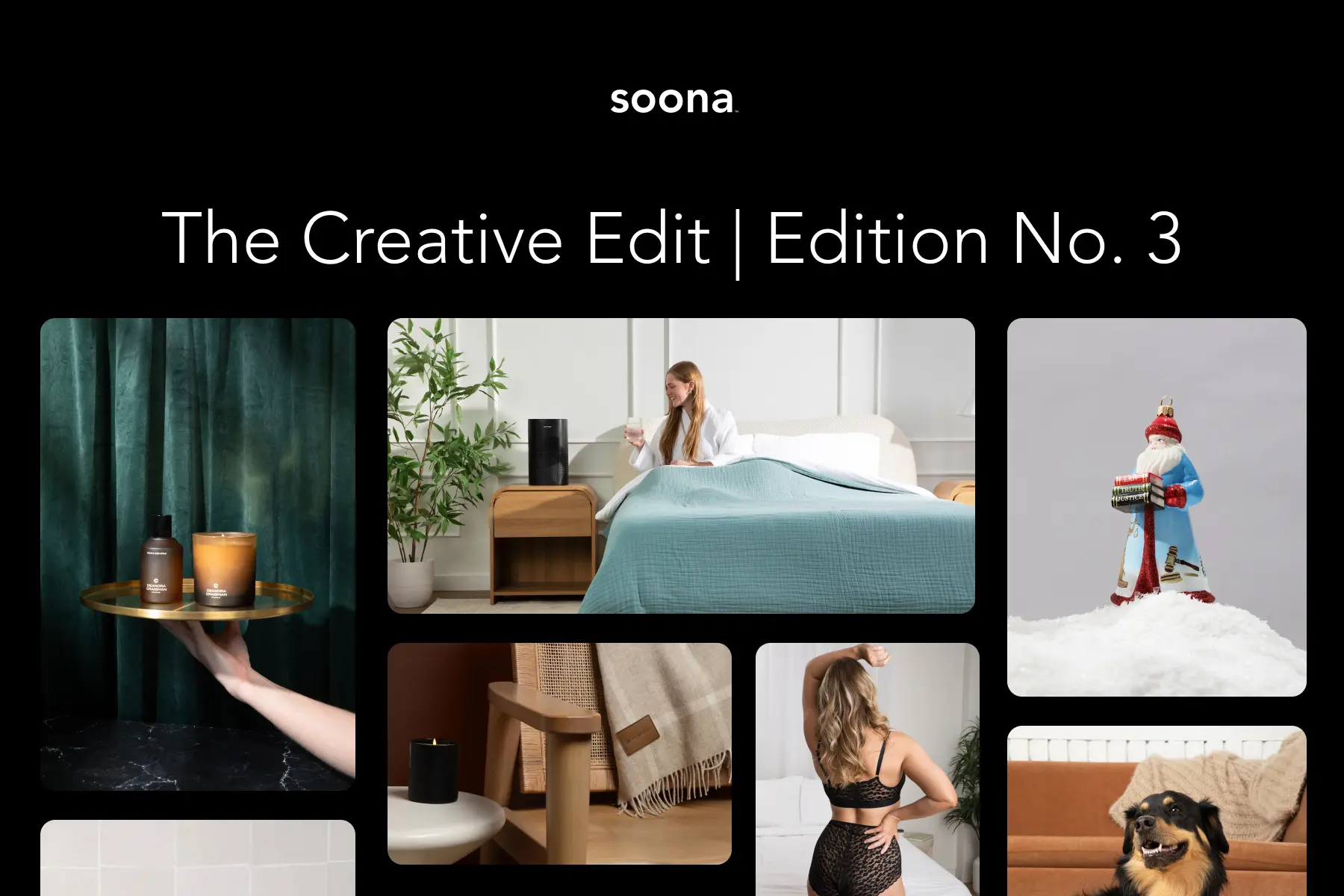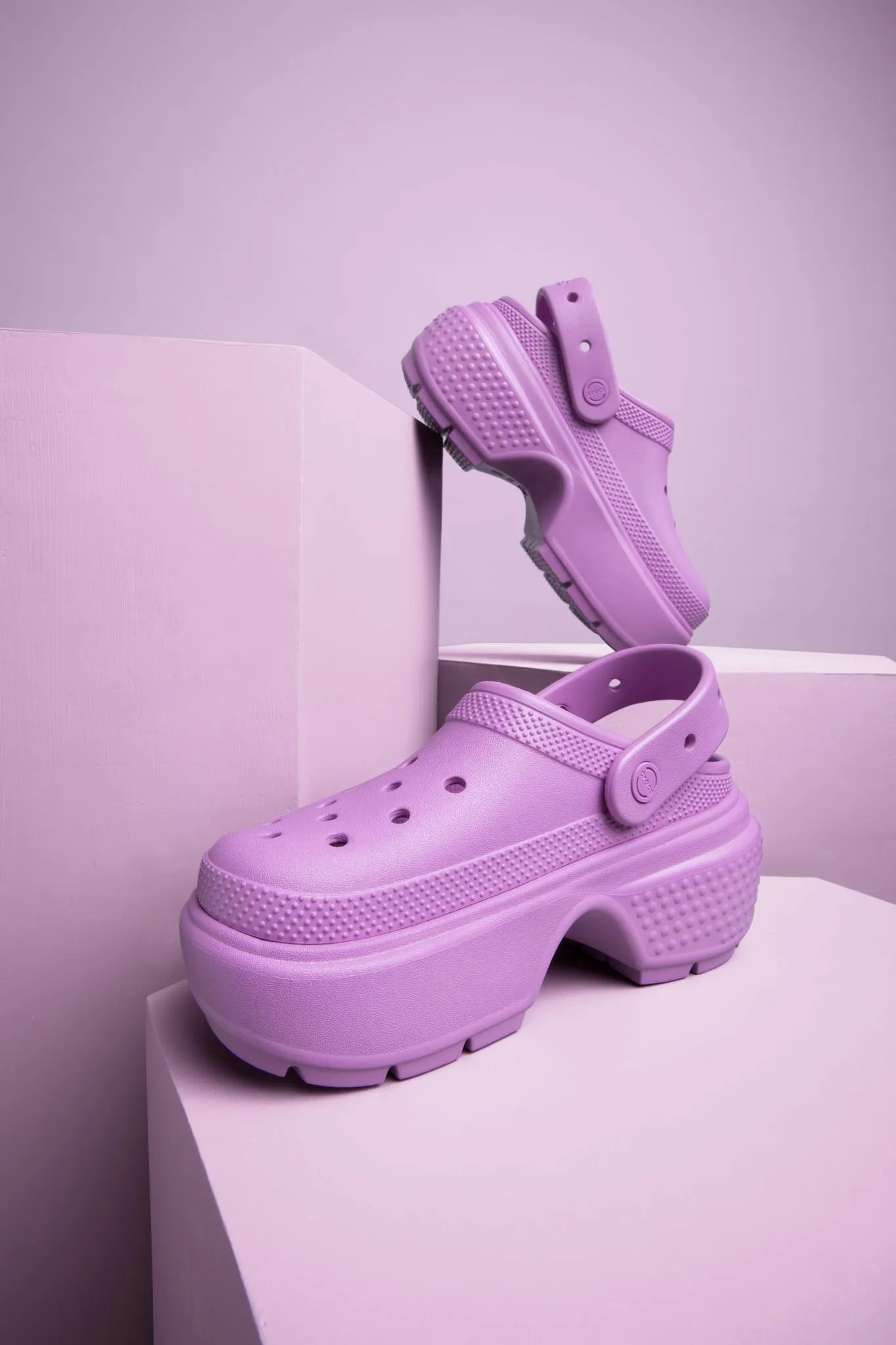you’ve probably heard how much you need to tell your “product story” a thousand times. how important it is to tell that story on your website. in your ads. on your socials. but has anyone ever taken the time to explain what exactly that means?
product storytelling - at its core - is simply setting expectations of your product for your customers.
telling the story of your product can be easily broken out into if and how you’ve incorporated the 5 senses into your content. if you’ve never even really considered how to showcase our natural senses in your content - buckle up! we’re taking you on a sensory journey that promises inspiring content ideas. bridging the gap between ecomm and IRL shopping. and raking in more clicks than ever before.
sight
okay. this is an easy one. your visual content accomplishes this just by existing. your customers are able to look at your product through your photos and videos. but are they really seeing it?
ensure your building those expectations by showing your customers close-up details of your product. show your product in motion. show how it stretches. show how sturdy it is.

touch
imagine you have a skincare line and you’re releasing a new face moisturizer. you’ve worked really hard on this new product and you are most proud of how silky it is and how it leaves the skin feeling after its been rubbed in. how do you show off those features?
this is where having a model & video really come into play. through video: you can show your model going through the full process of using your moisturizer. you can demonstrate the silky texture as it comes out of the pump. the smooth way it glides onto the model’s face. how quickly it absorbs into the skin. and how the skin looks after application.
these are all features a customer would be testing if they were shopping IRL. and since they can’t perform those tests themselves - it’s up to you to bridge that gap.
{{studio-ad}}
taste
what? are we crazy? can you ACTUALLY show taste through online images and videos? YES YOU CAN!
let’s say you have a drink product. its main ingredients are coconut and chocolate. what better way to demonstrate the taste of your drink than by showing the drink next to artfully styled chocolate chunks and a beautiful coconut. by showing those ingredients in context with your drink: you’re asking the customer’s brain to search for something similar they’ve had and connect the dots.

smell
if you can show taste - you can definitely show smell.
similar to taste: you have to show ingredients. showing ingredients help the brain recall what it has smelled that is similar to what it’s seeing. adding fresh ingredients to your content not only looks beautiful but brings your product to life.
picture this: you’re launching a new spray that smells like you’re surrounded by lemon trees on the isle of Capri. you’re mist has a subtle lemon-fresh smell. you add a whole lemon and a small lemon peel garnish and suddenly your product-on-white image has gone from a blank slate to a lemon bomb to the nose. it’s pretty clear which of those images will stand out.

hear
sound is a tough one. especially with most people shopping on mobile with their phones on silent. but it can be done!
use videos. stop-motion or GIFs to tap into sounds that people have heard before. the sound of a beverage being poured into a glass. a wrapper being opened. or a match striking to light a candle. even if someone doesn't hear the actual sound - their brain can pull that sound of the archieves and fill that auditory gap.
find actions that bring the sound of your image to life.
hot tip! 🔥
here’s an exercise for you: write down 5-10 descriptive words for your product. then ask yourself how your content shows those descriptors.
let’s say among your list you came up with the words fresh. moisturizing. & fruity. consider how your content showcases each of those words through the senses. by tapping into the senses - whether you explore all of them or just one - your content will naturally tell your product story so much better than a description ever could.
you’ve probably heard how much you need to tell your “product story” a thousand times. how important it is to tell that story on your website. in your ads. on your socials. but has anyone ever taken the time to explain what exactly that means?
product storytelling - at its core - is simply setting expectations of your product for your customers.
telling the story of your product can be easily broken out into if and how you’ve incorporated the 5 senses into your content. if you’ve never even really considered how to showcase our natural senses in your content - buckle up! we’re taking you on a sensory journey that promises inspiring content ideas. bridging the gap between ecomm and IRL shopping. and raking in more clicks than ever before.
sight
okay. this is an easy one. your visual content accomplishes this just by existing. your customers are able to look at your product through your photos and videos. but are they really seeing it?
ensure your building those expectations by showing your customers close-up details of your product. show your product in motion. show how it stretches. show how sturdy it is.

touch
imagine you have a skincare line and you’re releasing a new face moisturizer. you’ve worked really hard on this new product and you are most proud of how silky it is and how it leaves the skin feeling after its been rubbed in. how do you show off those features?
this is where having a model & video really come into play. through video: you can show your model going through the full process of using your moisturizer. you can demonstrate the silky texture as it comes out of the pump. the smooth way it glides onto the model’s face. how quickly it absorbs into the skin. and how the skin looks after application.
these are all features a customer would be testing if they were shopping IRL. and since they can’t perform those tests themselves - it’s up to you to bridge that gap.
{{studio-ad}}
taste
what? are we crazy? can you ACTUALLY show taste through online images and videos? YES YOU CAN!
let’s say you have a drink product. its main ingredients are coconut and chocolate. what better way to demonstrate the taste of your drink than by showing the drink next to artfully styled chocolate chunks and a beautiful coconut. by showing those ingredients in context with your drink: you’re asking the customer’s brain to search for something similar they’ve had and connect the dots.

smell
if you can show taste - you can definitely show smell.
similar to taste: you have to show ingredients. showing ingredients help the brain recall what it has smelled that is similar to what it’s seeing. adding fresh ingredients to your content not only looks beautiful but brings your product to life.
picture this: you’re launching a new spray that smells like you’re surrounded by lemon trees on the isle of Capri. you’re mist has a subtle lemon-fresh smell. you add a whole lemon and a small lemon peel garnish and suddenly your product-on-white image has gone from a blank slate to a lemon bomb to the nose. it’s pretty clear which of those images will stand out.

hear
sound is a tough one. especially with most people shopping on mobile with their phones on silent. but it can be done!
use videos. stop-motion or GIFs to tap into sounds that people have heard before. the sound of a beverage being poured into a glass. a wrapper being opened. or a match striking to light a candle. even if someone doesn't hear the actual sound - their brain can pull that sound of the archieves and fill that auditory gap.
find actions that bring the sound of your image to life.
hot tip! 🔥
here’s an exercise for you: write down 5-10 descriptive words for your product. then ask yourself how your content shows those descriptors.
let’s say among your list you came up with the words fresh. moisturizing. & fruity. consider how your content showcases each of those words through the senses. by tapping into the senses - whether you explore all of them or just one - your content will naturally tell your product story so much better than a description ever could.



